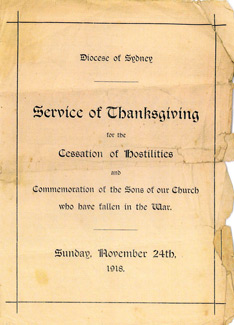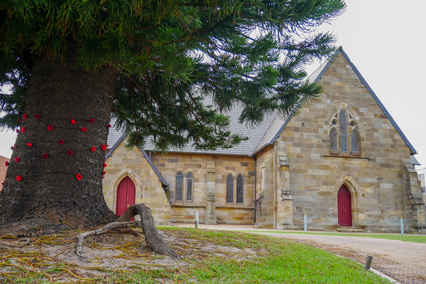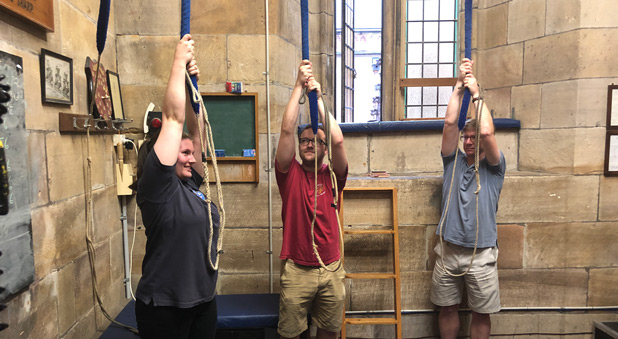Bells at Anglican churches across Greater Sydney and the Illawarra will ring to mark 100 years since the signing of the Armistice which ended World War One.
Archbishop Glenn Davies has requested bells ring for one minute up to 11 am, which was the time of the signing and cessation of hostilities after four years of what became known as the Great War. It's understood church bells will ring out in other parts of Australia, as they did in 1918 to communicate news that war was over.
From a population of fewer than five million, more than 400 thousand Australian men enlisted, of which over 60,000 were killed and 156,000 wounded, gassed, or taken prisoner.
Services will be held in churches across Sydney, many parishes have moved services forward to allow people to attend both the church service and local cenotaph ceremonies.

Dignitaries will gather at St Andrew’s Cathedral at nine am on Sunday, where the Premier, the Hon Gladys Berejiklian will be in attendance as well as the Governor, His Excellency, General The Honourable David Hurley, who will lay a wreath.
The cathedral service will include elements of the service held 100 years ago to mark the occasion, taken from the original printed service sheet.
The bells in the tower of the cathedral will ring for one minute at 1059am (see photo above of bellringers practising for the event).
Representatives of the Armed Forces will be in attendance and chaplains and serving personnel from the Army, Navy and Air Force will be at various parish centres.

In Wollongong, the congregation members at St Michael's Cathedral have wrapped 55 poppies around a large pine tree in memory of the 55 men on its Honour Board.
“The numerous extra poppies on our courtyard commemorate others from the Illawarra who also lost their lives. They were knitted and crocheted by church members,” said Canon Sandy Grant, senior minister at St Michael’s. “This includes an elderly niece, of Lieutenant Syd Duchesne. His name is recorded on the honour roll, and his niece, Joan Reid, still attends St Michael’s today. Lt Duchesne was killed on the first day at Gallipoli, 25 April 1915.”
During the war years, St Michael’s church bell rang each day at noon, with the aim that people would come to the church and pray for those serving and for “the speedy termination of the war”.
St Michael’s also had a key roll in communicating the end of war to the people of Wollongong.
Canon Grant quoted the entry in the church register for Monday 11th November 1918, which said: “At 855 pm Thanksgiving Service for victory over the Central Powers, Bulgaria, Turkey, Austria and Germany, which was completed by the signing of the Armistice at 11 am on the 11th Day of November 1918. The official news of the signing of the Armistice was conveyed to the people of Wollongong by the ringing of St Michael’s Church bell, which it was arranged should be the means of communicating the news when official. The people according to arrangement as notified by the rector met immediately in the Church for a Thanksgiving service to Almighty God in grateful acknowledgment of His gift of victory. The church was thronged with people of all Denominations and a Solemn and Happy service was held.”
















